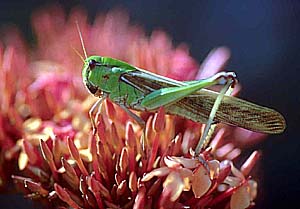| Environment All the World's a Cage
|
|||||
The beginning When I was about twelve years old I went to the Gir National Park and seeing the lions roaming free in the wild gave me a thrill. But during the same visit I also went to the Junagadh zoo. I remember going from cage to cage, from enclosure to enclosure, seeing the animals and the birds - the mighty lion and the mischievous monkey, the graceful pelicans and the proud peacock. An image I cannot forget is the tiger, our national animal, imprisoned in an iron cage, a cage so tiny that he could barely turn and I remember the huge elephant with strong iron chains biting into its legs. All staring at me with sightless, empty eyes. And I remember crying. I could not look the animals straight in the eye - for I was free, free to run and play and swim while they were imprisoned in a cage - away from the forests and the green grass and the tall trees. And I was guilty. For, I was part of the human race, who had uprooted these animals from their homes and brought them to the zoo. Why? I had no answer then and I have no answer now. |
Environment • Beautiful Beasts • Paradise in the Wild • The Ocean:Conquest • A Source of Solace • Sighting the Ocean • The Ocean in Verse • Childhood Dream • Hunt for Indian Tiger
Adventure activities | ||||
Another function that zoos are meant to perform is an educational one. Despite visiting a number of zoos, I don't recall learning anything beyond the name of the animal residing in the enclosure. Certainly, looking at animals cowering and pacing restlessly in the cage didn't give me a clue about how they lived, what they ate and how they interacted with others of their own kind. Zoological gardens can do much more. If run well, like the New Jersey zoo, a zoo can contribute towards conserving threatened animals and ultimately rehabilitating them in the wild. More can be learnt about the animals, their breeding habits, their growth pattern and their behaviour, if the zoo is managed in a proper manner - keeping in mind that the zoo is meant for the well-being of it's inmates and not for the entertainment of the human race. The status of zoos in India (as in most countries) is pathetic and terrifying. Though it is mandatory for a zoo to have a full time vet, this is rarely the case. Zoological gardens are always struggling because of paucity of funds and people in charge of the animals rarely have a clue to what they are doing. Zoo biology is a relatively young science and most zoos run without the knowledge that it even exists. Going to the zoo is a picnic, somewhere you can take the kids on a Sunday. And many of us are not beyond poking and prodding the animals to hear them roar and squeak. A zookeeper once told me that a habit that reccurred with rather alarming regularity was that the monkeys were fed with bananas with pieces of razor blades stuffed in it! I recall seeing a hippopotamus, sitting in it's pool of stagnant and filthy water, swallowing a plastic bag full of popcorn which one of the visitors had generously tossed to the poor animal.
Why are the animals condemned to live and die in such appalling conditions? What is their crime, that they are being imprisoned for life?
Courtesy: Sanctuary Magazine
|
|||||
Editor: Romola Butalia (c) India Travelogue. All rights reserved. |
|||||
 Zoos were originally created as places of entertainment and their roles as centres of conservation didn't arise seriously until about thirty years ago. However, it was only some years later when the Jersey Wildlife Preservation Trust was founded by Gerald Durrell that zoos as conservation bodies got a boost. But studies show that the conservation record of zoos is rather mediocre all over the world and the primary function they seem to perform is that of entertainment. In fact, zoos allegedly contribute to the depletion of species in the wild. For when an animal dies, many zoos supposedly replace it with one from the wild.
Zoos were originally created as places of entertainment and their roles as centres of conservation didn't arise seriously until about thirty years ago. However, it was only some years later when the Jersey Wildlife Preservation Trust was founded by Gerald Durrell that zoos as conservation bodies got a boost. But studies show that the conservation record of zoos is rather mediocre all over the world and the primary function they seem to perform is that of entertainment. In fact, zoos allegedly contribute to the depletion of species in the wild. For when an animal dies, many zoos supposedly replace it with one from the wild.

 A losing battle
A losing battle